Bachelors / Masters Projects
Two-dimensional Josephson Arrays


|
Josephson arrays can be fabricated from superconductor-semiconductor heterostructures, allowing voltage control of phase transitions. What new phases of matter will emerge when a flux is thread and the gate voltage is changed? Can we generate unique ground states in different lattice geometries? Read more here>> To learn more, contact Charles Marcus or Saulius Vaitiekénas. |
Experiments on quantum wires and hybrid quantum dots
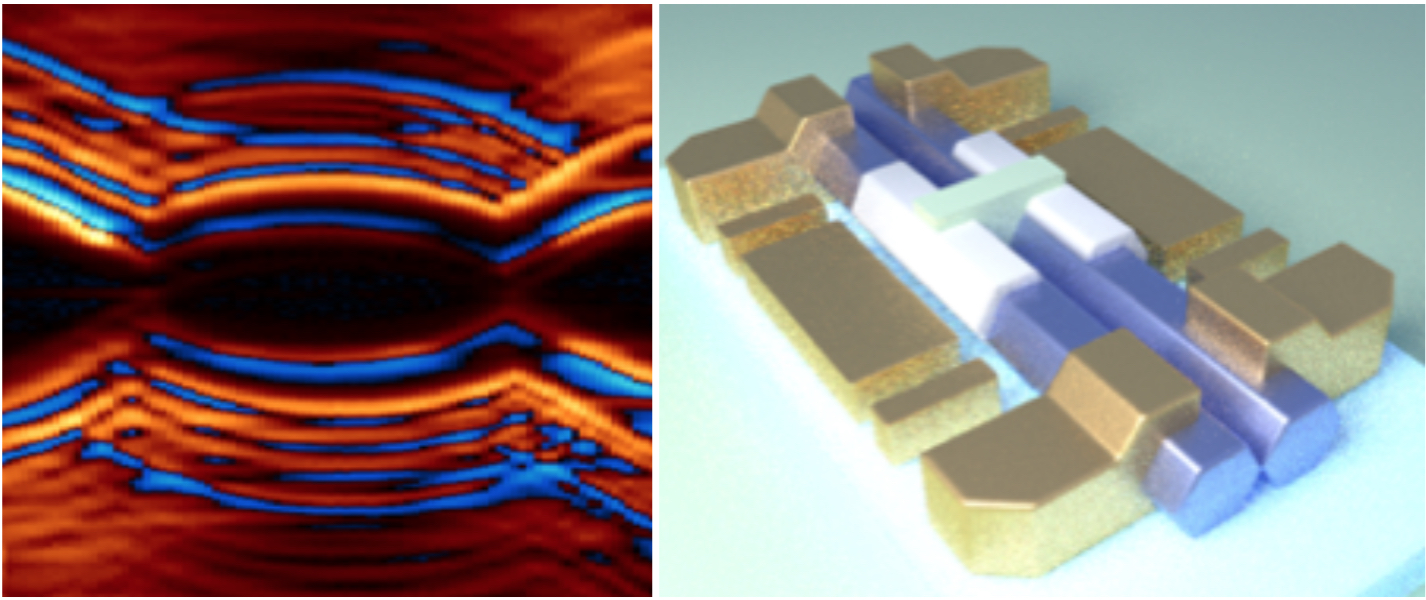
|
Student projects will focus on devices based on nanostructured materials synthesized in-house such as semiconductor nanowires or carbon-based materials. When superconducting electrodes are attached to such wires, they form quantum dots where we can study the states arising in such ”artificial superconducting atoms/molecules”. Currently we are investigating these quantum states and the coupling between them in different multi-quantum-dot geometries consisting of, e.g., serial or parallel double quantum dots contacted with one or more superconducting electrodes. Read more here >> If you are interested in being involved please contact Jesper Nygård. |
Electron Spin Based Qubits
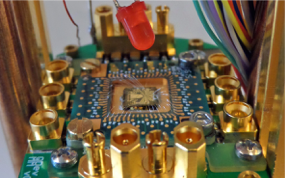
|
Our spin qubit team is looking for bachelor and master students to work on several new projects to fabricate, control, read out, and couple single electron spins to make quantum mechanical bits, the building block for a quantum computer. Using state-of-the-art electron beam lithography at the center’s nanofabrication facilities we are able to fabricate semiconducting quantum dots of ~ 100 nm in size. These dots contain a single electron, like an artificial hydrogen atom. We work on the material platforms SiGe, silicon-on-insulator and GaAs. At sufficiently low temperatures (tens of millikelvin) we can couple these quantum dots to each other. By applying high frequency pulses (MHz to GHz regime) we can control and read out their spin state with high fidelity. Silicon-28 spin qubit project, read more here >> Foundry-fabricated spin qubit project, read more here >> Multi-qubit operations in GaAs, read more here >> FPGA-based qubit classification, read more here >> If you are interested in these or other projects of the spin qubit team, please contact Ferdinand Kuemmeth. |
Ferromagnetic hybrid nanowire development for quantum devices
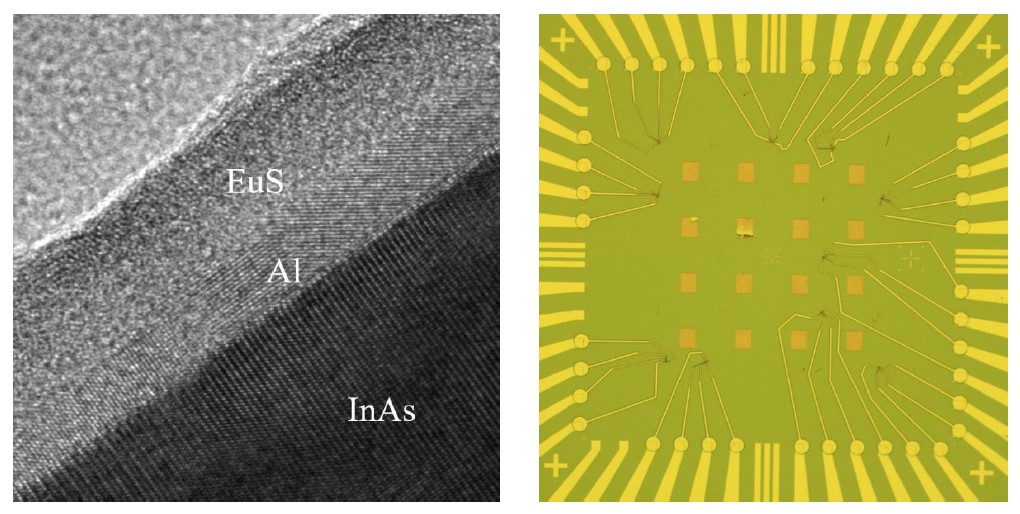
|
Ferromagnetic hybrid nanowires provide possibilities to extend the current research of semiconductor-superconductor hybrid nanowires. The student projects will focus on devices based on in-house synthesized semiconductor-superconductor-ferromagnetic insulator hybrid nanowires. Read more... If you are interested, do not hesitate to contact supervisors, Yu Liu or Jesper Nygård. |
Artificial molecules hosted by cross-sectioned crystal fibers

|
A new Masters project focusing on the experimental investigation of arrays of artificial atoms is available in the Center for Quantum Devices (QDev). You will learn a unique approach to slicing nano-scale crystals and apply this knowledge to build electronic quantum devices in a new way (patent pending). These devices will be measured at sub-kelvin temperatures where you will investigate how this new technique can be used to tune the coupling between artificial If this sounds interesting contact Jesper Nygård or Joachim Sestoft. |
Insect brain-inspired nanophotonics for nanoscaled AI
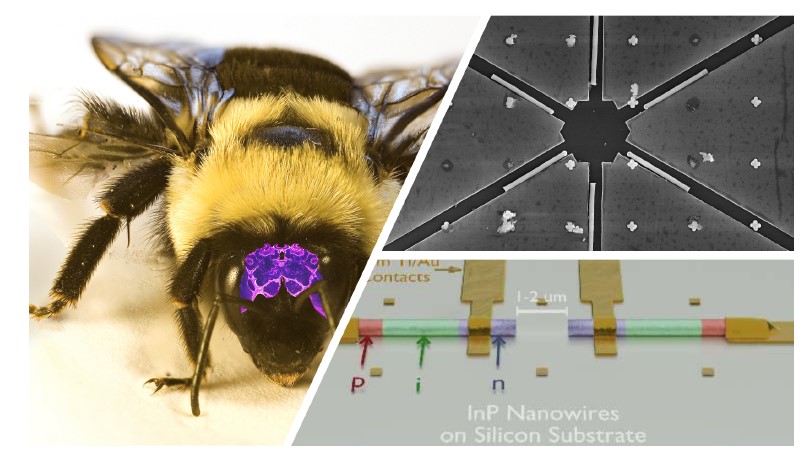
|
In this project you will become part of a European team (www.insectneuronano.lu.se) composed of neuroscientists, roboticists, chemists and physicists – all in the endeaver to achieve nanoscaled neuromorphic computing with low energy consumption. Together with collaborators, your main focus will be to explore nanophotonic circuitry for nanowire-to-nanowire communication and nanowire-based memory components. Read more... If this sounds interesting contact Jesper Nygård or Joachim Sestoft. |
Crystal structure defined quantum dots

|
In this project you will build and measure nanowire-based quantum devices at sub-kelvin temperatures to investigate how different crystal phases (wurtzite/zincblende) create potential wells which can trap single electronic states. In these devices you will discover, for instance, how two of these states interact or how they couple to superconductors. Read more... If this sounds interesting contact Jesper Nygård or Joachim Sestoft. |
Atomic structures of exotic nanomaterials
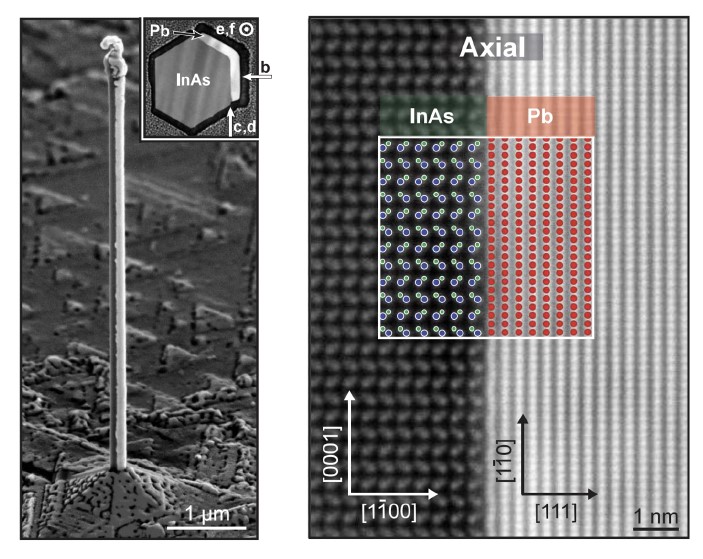
|
In this project you will learn to operate our state-of-the-art transmission electron microscope (among other) to study composition, morphology, epitaxy and crystal structures of novel nano-scale semiconductors. Using this knowledge you will become an integral part of the materials research team investigating exotic materials who are all key components in emerging quantum applications. If this sounds interesting contact Jesper Nygård or Martin Bjergfelt. |
